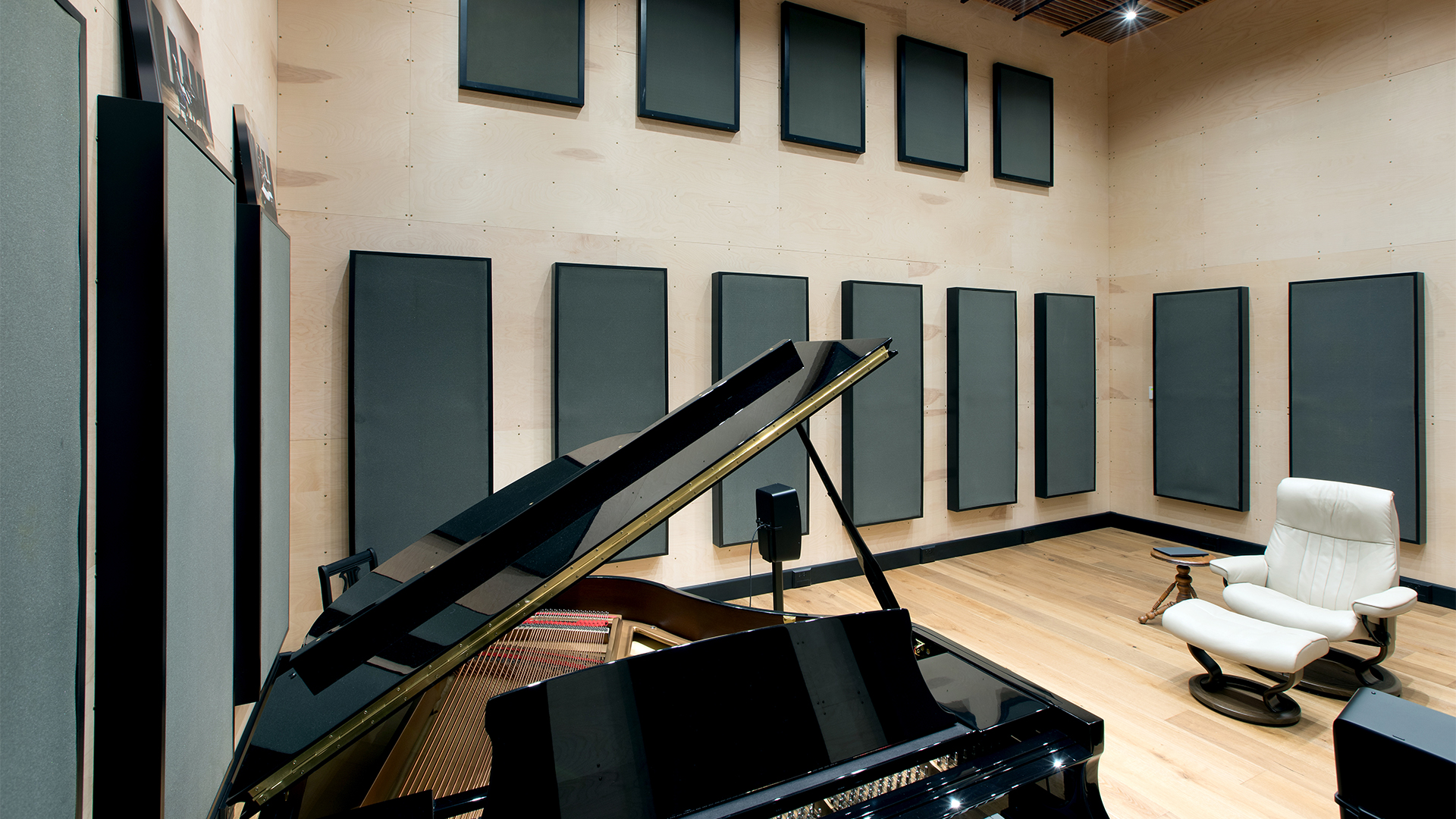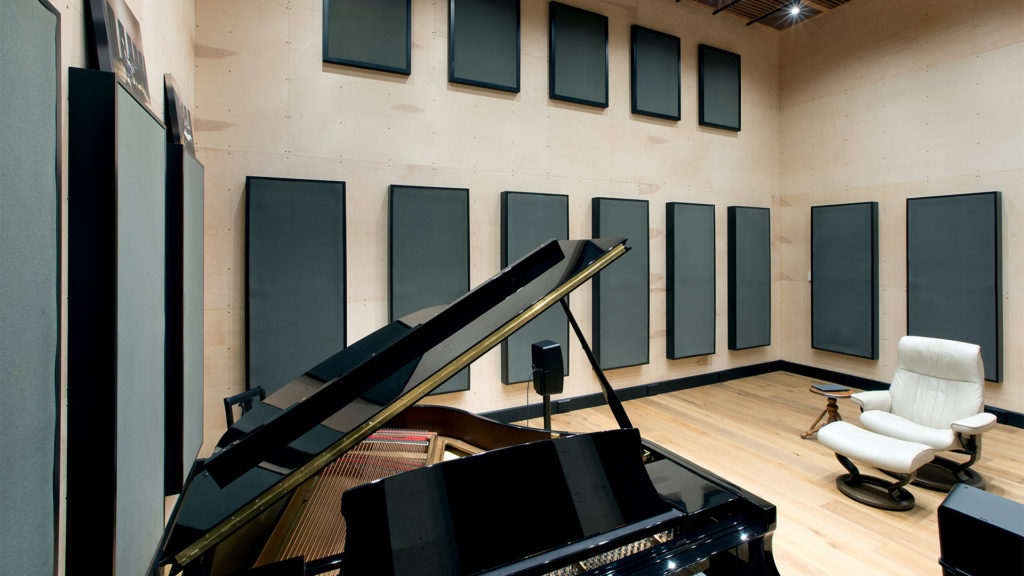
Table of Contents
Introduction
There is no such thing as sound deadening foam. There are foam types that have sound absorption capabilities. The term deadening should not be used with any foam type. It should not be used in the term sound deadening foam. There is sound absorbing foam but no sound deadening foam. Foam is a sound absorption technology. It has nothing to do with noise transmission which is sound from a source, say a garbage truck transmitting through your walls into your room.
Noise transmission is mitigated by building a barrier between the noise source and the receiver. A barrier is a permanent structure that is designed and built based upon the frequency and amplitude of the noise source. There is no foam and definitely no sound deadening foam that will stop noise.
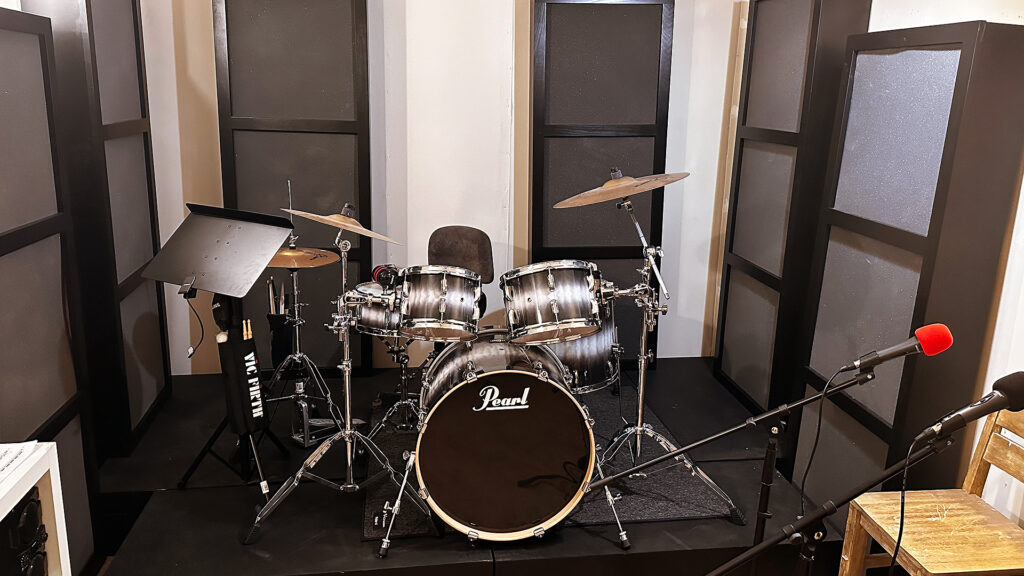
The Key to Optimal Music Studio Acoustics
If the search term sound deadening foam actually means sound absorbing foam, then we have something to discuss. There are two main types of foam. There is closed cell foam and open celled foam. Closed cell foam is the foam type that seat cushions are made of. Closed cell foam is for support. It is also used in packing materials for shipping.
Open celled foam is for sound absorption. Open celled foam could be what the search term sound deadening foam is referring to. There are numerous types of sound absorbing, open celled foams in the marketplace. Which one to use depends on many variables. However, the most important variable that must be considered is the rate and level of absorption as it is applied to music and voice.

Mastering the Art of Sound Absorption
Music and voice are different from noise. Noise will respond to any proper treatment type. Music and voice are different. Since we communicate through both music and voice our hearing brain system is acutely aware of subtle changes in tone, pitch, and timbre. How we manage that delicate balance through sound absorption is critical if we are to produce a sonic presentation value that is natural and believable.
The rate and level of any sound absorption technology must be smooth and linear. There can be no spatial irregularities in the rate of absorption. Every octave band must be treated equally as another. There can be no peaks or dips in the foams’ performance. Our ears will hear these distortions. Look at the graph below.
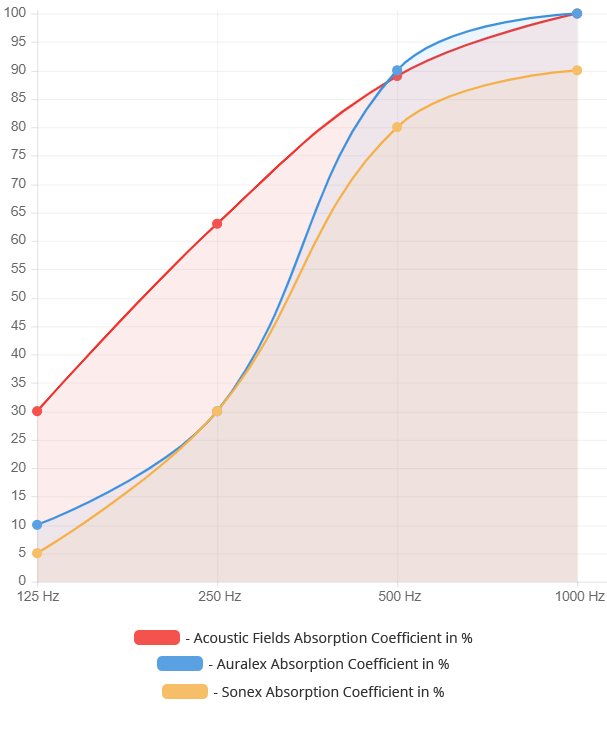
The Unparalleled Performance of Acoustic Fields Proprietary Foam
The red line is our, Acoustic Fields proprietary foam’s technology absorption rate and level. The blue and gold lines are competitor foams. Notice the smooth linear absorption rate of our foam compared to the rate of the other two shown. Why would you treat an acoustical issue with a technology that has large dips in its performance. If you see a dip on an absorption curve for any product type, that means that the product does not work at that frequency where the dip occurs.
It can be more than just one frequency. It can be complete octave bands which compose many frequencies. Using foam with the bottom two curves to treat music and voice is like using a philips screw driver to turn a regular screw head. When using any sound absorption technology, you must have above all else predictability and consistency in the performance.
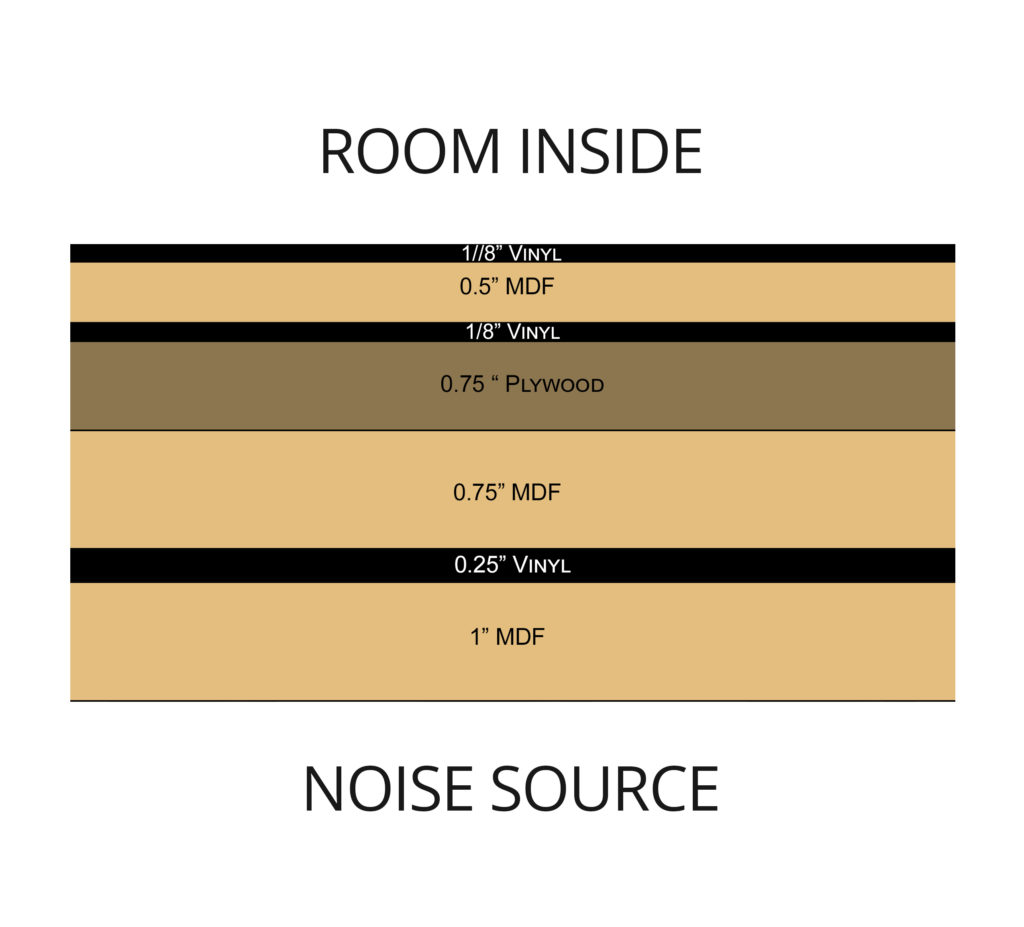
Noise Transmission and Treatment
Whenever you are dealing with any acoustical issue from sound absorption or diffusion along with noise transmission, you must develop a sonic strategy. You must define the acoustical goals you are trying to achieve. You then quantify those goals with the appropriate acoustical terms so you are not searching on the net using terms like sound deadening foam.
You then move to quantify those issues by placing numbers to them. The numbers will tell you how much treatment you will require, what type of treatment, what rate and level of both absorption and diffusion to use along with a host of other data. Let’s examine a noise barrier built to stop noise transmission.
Every material used within the barrier design is based upon the frequency and amplitude of the noise. The noise must be measured. Along with the material type, we have the material density to consider along with the way the barrier “sandwich” is designed. At Acoustic Fields, we can assist you with all noise and treatment issues.


